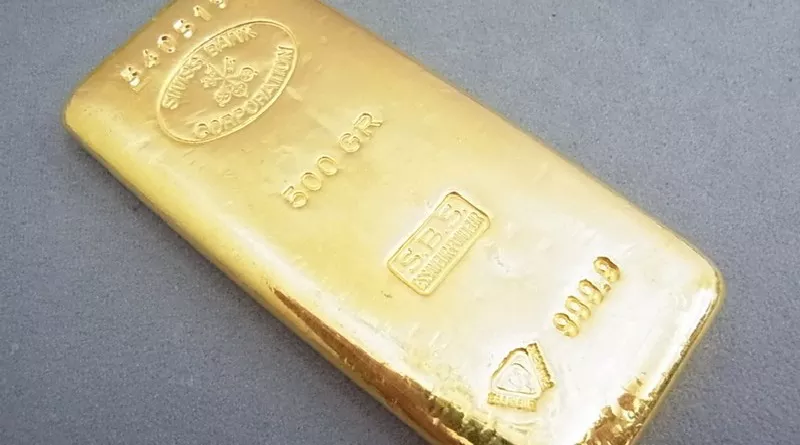Gold has long been revered as a store of value and a hedge against economic uncertainty. Throughout history, civilizations have prized gold for its scarcity, durability, and intrinsic beauty. Its role as a safe haven asset has been ingrained in the global financial system for centuries.
In modern times, gold continues to hold its allure as a tangible asset that retains value in times of economic turbulence. Investors flock to gold during periods of inflation, currency devaluation, geopolitical instability, and market volatility. The precious metal is seen as a safeguard against the erosion of purchasing power and a hedge against systemic risk.
Recent Price Trends
In recent months, the price of gold has experienced a significant decline, catching many investors off guard. The decline represents a departure from the upward trajectory that gold had been on for several years. To understand this sudden reversal, it’s essential to examine the recent trends leading up to the drop.
Throughout much of the past decade, gold prices steadily climbed as investors sought refuge from geopolitical tensions, trade disputes, and the uncertainties surrounding global economic growth. However, in the latter half of [year], gold prices began to exhibit signs of weakness. This decline gained momentum in the months leading up to the recent drop.
Economic Indicators
Several key economic indicators play a significant role in influencing gold prices. These include inflation rates, currency values, and interest rates. Inflation erodes the value of fiat currencies, making gold more attractive as a store of wealth. Similarly, currency devaluation can prompt investors to seek safety in gold as a hedge against currency risk.
Interest rates also exert a significant influence on gold prices. When interest rates are low, the opportunity cost of holding gold diminishes, making it more appealing to investors. Conversely, rising interest rates increase the yield potential of alternative investments, reducing the relative attractiveness of gold.
Federal Reserve Policies
The policies of the Federal Reserve, particularly regarding interest rates, have a profound impact on gold prices. The Federal Reserve’s decisions on monetary policy can influence borrowing costs, inflation expectations, and overall market sentiment.
In recent years, the Federal Reserve implemented a series of interest rate hikes as part of efforts to normalize monetary policy following the global financial crisis. These rate hikes put upward pressure on the U.S. dollar and dampened investor demand for gold. However, amid mounting economic uncertainties, the Federal Reserve reversed course and adopted a more dovish stance, cutting interest rates and resuming quantitative easing measures.
Global Market Dynamics
Global events and market dynamics can also drive fluctuations in gold prices. Geopolitical tensions, trade conflicts, and economic downturns can all spark demand for gold as a safe haven asset. Conversely, positive developments such as trade agreements, economic growth, and geopolitical stability can dampen demand for gold.
Recent geopolitical developments, including [specific events], have contributed to heightened uncertainty and volatility in global markets. These factors have prompted investors to reevaluate their risk exposure and seek refuge in assets perceived as safer stores of value.
Investor Behavior
Investor sentiment and actions play a pivotal role in shaping gold’s valuation. Market psychology, speculative trading, and herd mentality can lead to rapid price swings in the gold market. Fear, greed, and uncertainty can drive investors to buy or sell gold in response to perceived opportunities or threats.
During periods of heightened uncertainty, such as [specific events], investors may flock to gold as a safe haven asset, driving up prices. Conversely, periods of optimism and risk appetite can prompt investors to liquidate their gold holdings in favor of higher-yielding assets.
Supply and Demand
The dynamics of supply and demand also play a crucial role in influencing gold prices. Gold production is limited by geological constraints, making it a scarce resource. Meanwhile, demand for gold comes from various sectors, including jewelry, technology, central banks, and investment.
In recent years, demand for gold has been buoyed by robust investment demand amid economic uncertainties. However, slowing global economic growth and shifts in consumer preferences have tempered demand from certain sectors, such as jewelry.
Expert Opinions
Financial experts and market analysts offer valuable insights into the factors driving gold prices and their implications for investors. Many analysts believe that the recent drop in gold prices is a temporary correction rather than a reversal of the long-term bullish trend. They point to underlying economic fundamentals, including low interest rates, fiscal stimulus measures, and geopolitical tensions, as supportive of higher gold prices in the future.
Future Outlook
Looking ahead, the outlook for gold prices remains uncertain amidst a complex web of economic, geopolitical, and market factors. While short-term fluctuations are inevitable, the long-term bullish case for gold remains intact. Economic uncertainties, loose monetary policies, and geopolitical risks are likely to continue driving demand for gold as a safe haven asset.
However, investors should remain vigilant and adapt their strategies to evolving market conditions. Diversification, risk management, and a long-term investment horizon are essential principles for navigating the volatile gold market.
See Also China’s Strategic Accumulation of Gold: A Complete Analysis
In conclusion
The recent drop in gold prices can be attributed to a confluence of factors, including shifting economic indicators, Federal Reserve policies, global market dynamics, investor behavior, and supply-demand dynamics. While short-term fluctuations are to be expected, the fundamental drivers supporting gold’s value as a safe haven asset remain intact. Investors should remain focused on the long-term and maintain a diversified portfolio that includes exposure to gold as a hedge against uncertainty and volatility in the global economy.


